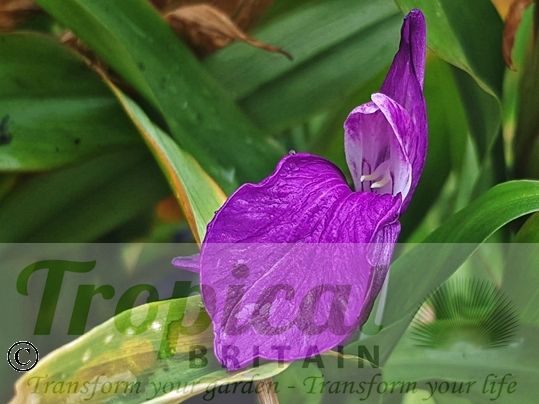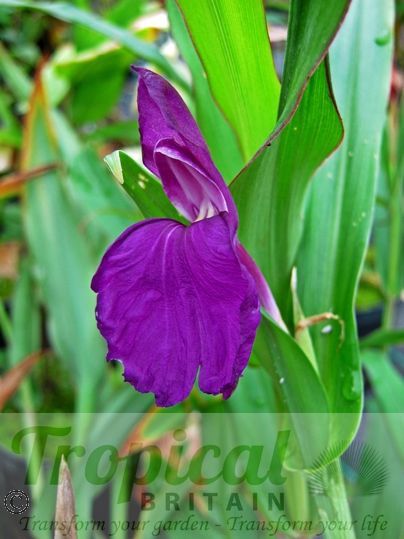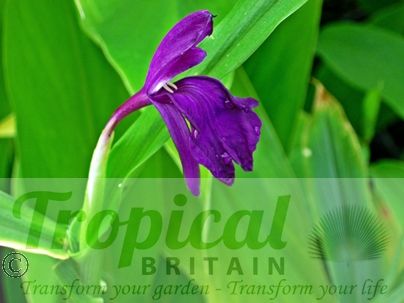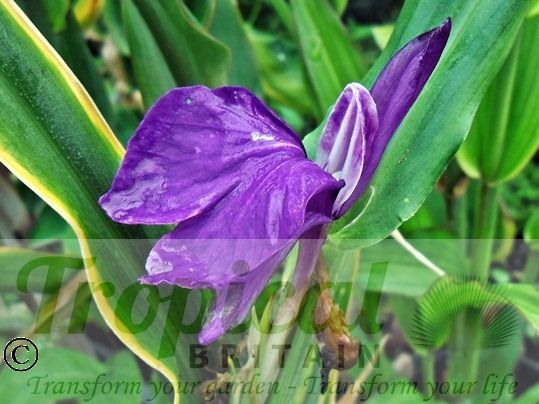Roscoea auriculata
Roscoea auriculata is a small Ginger endemic to the eastern Himalayas where it can be found in the Nyemo region to the west of Lhasa in south-central Tibet, eastern Nepal, Bhutan and in the Indian state of Sikkim including the Khangchendzonga Biosphere Reserve and the Yumthang Valley. It grows at elevations between 2,400 and 3,575 m in open grasslands, upland meadows and rocky slopes.
It has an upright habit to 50-60 cm with lance-shaped foliage and a startlingly-bright and very beautiful violet-purple flower with small white staminodes at its throat. Fully hardy in the UK, Roscoea auriculata is probably the hardiest member of the Zingiberaceae commonly grown here and it is often planted in combination - somewhat unimaginatively in my opinion - with other Alpines. It tolerates full sun better than the Hedychiums but it is often best to plant it in a partially shaded position or in an aspect that doesn't take the sun all day. Although it usually grows on open upland meadows in the wild, in cultivation it is seen at its best grown in combination with the foliage of large-leaved evergreens where the almost iridescent purple of it flowers stands in sharp yet pleasingly calm contrast to the green. In combination with the shining large foliage of Fatsia japonica, for instance, its amazing butterfly-like flowers appear to hover or flutter in the breeze. Despite its extraordinary colour, it is a smallish and subtle flower and should not be made to compete with larger more ostentatious blooms with all their eye-diverting drama.
Roscoea auriculata is very easy to grow and after remaining dormant until late in the season it flowers throughout most of the summer, often in two distinct flushes. It enjoys a fertile, humus-rich soil that is moist yet well-drained.
Additional Information
| Order | Zingiberales |
|---|---|
| Family | Zingiberaceae |
| Sub-Family | Zingiberoideae |
| Synonyms | Roscoea purpurea var. auriculata, Roscoea sikkimensis |
| Geographical Origin | Eastern Himalayas: the Nyemo region to the west of Lhasa in south-central Tibet, eastern Nepal, Bhutan and in the Indian state of Sikkim including the Khangchendzonga Biosphere Reserve and the Yumthang Valley |
| Cultivation | Full sun to half-shade. Rich, moist, well-drained soil |
| Eventual Height | 50-60cm |
| Eventual Spread | 30-40cm |
| Hardiness | Fully hardy. It benefits from its long winter dormant period by missing the frosts |

Free DELIVERY
ON ALL ORDERS OVER £99THIS OFFER IS VALID ON ALL OUR STORE ITEMS.











